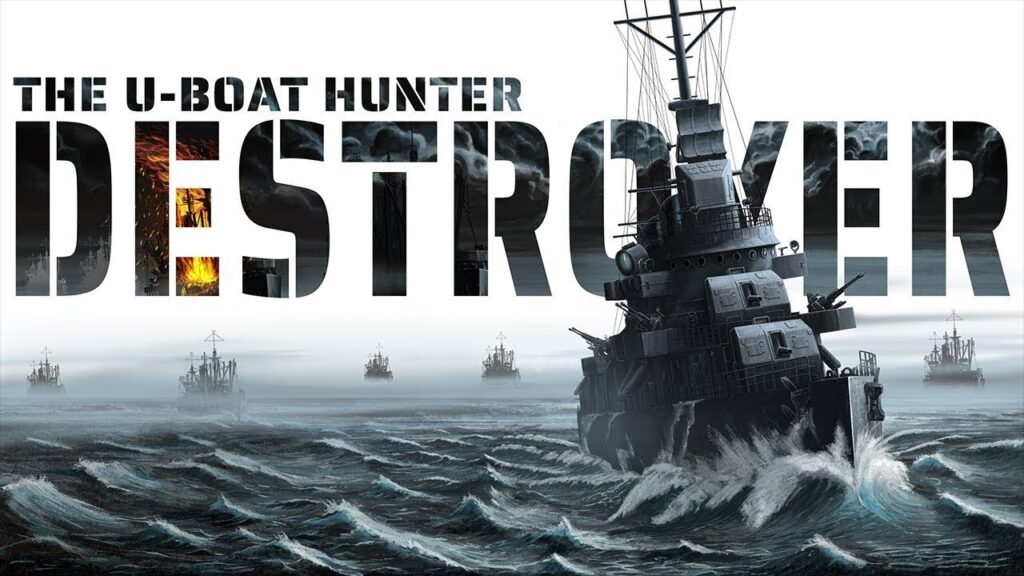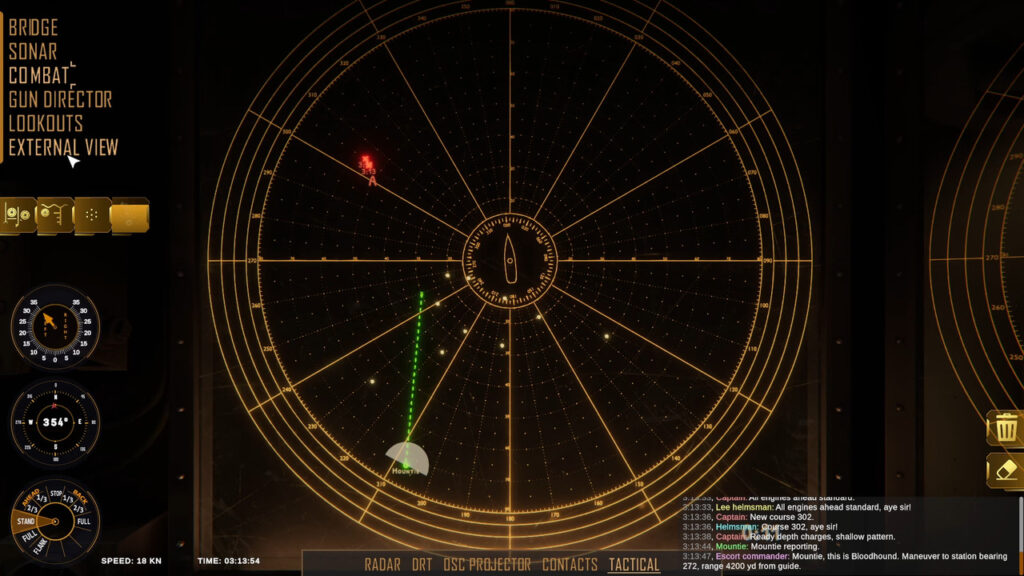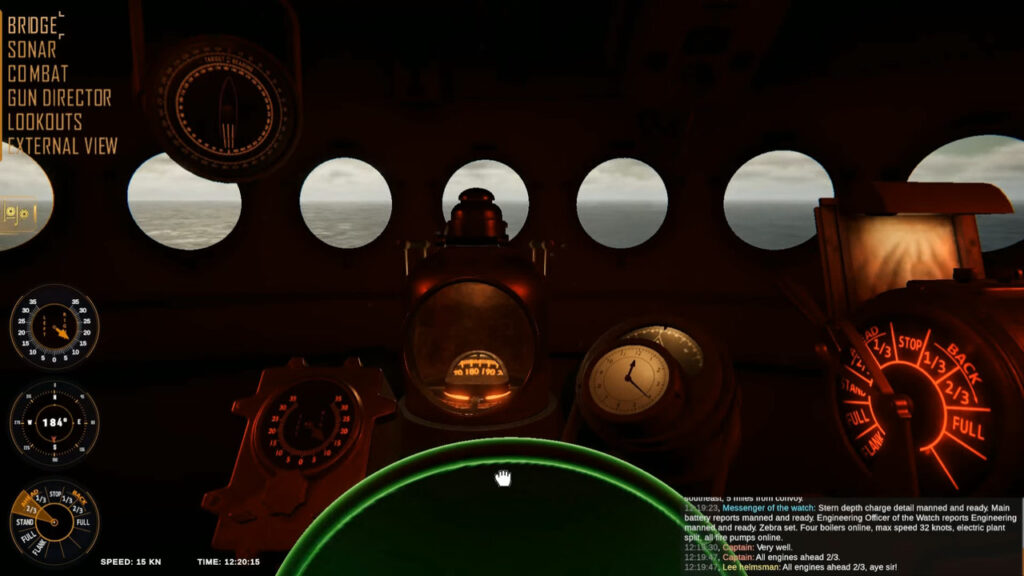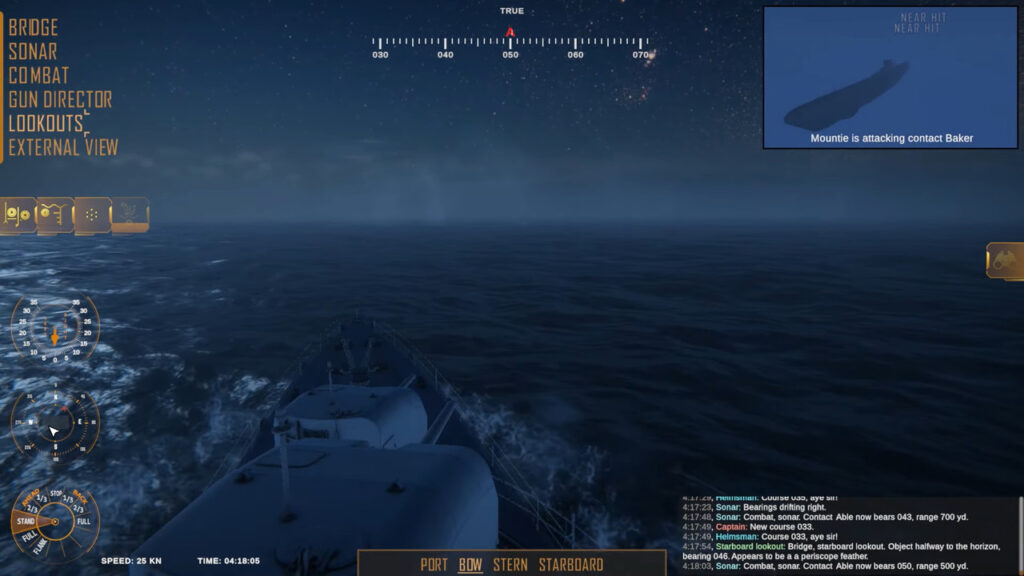
Developer: Iron Wolf Studio
Publisher: Daedalic Entertainment
Platform: PC
Tested on: PC
Destroyer: The U-Boat Hunter – Review
The Second World War has been an inspiration for countless video games, but the vast majority of these fall into one of two categories: you’re either directing the theatre of war through tactical top-down gameplay or you try to survive on the battlefield in first (or third) person perspective. Whenever a game appears that does something different within the WW2 setting, it draws attention by deviating from the norm. Such is the case with Destroyer: The U-Boat Hunter, a highly realistic naval warfare sim game from Iron Wolf Studio. A game doing something unique doesn’t guarantee that it’s good, of course, so we’re taking a look at Destroyer to see whether it’s worth donning your captain’s hat or if you’re better off keeping your boots firmly on the ground.
Story
The titular Destroyer is a massive Fletcher-class ship that belongs to the US military. During the 1940s, these enormous vessels were tasked with sniffing out German submarines, in order to keep the established sea routes safe for the naval convoys of the Americans and their allies. In Destroyer, you are put in charge of said ship during the Battle of the Atlantic. There isn’t a whole lot of depth to Destroyer’s main campaign in terms of narrative, but there doesn’t need to be either, as there is plenty of actual historical material that you can look up if you want to take a deep dive into the Fletcher-class Destroyer ships. Instead, the focus here is on delivering a highly realistic and historically accurate rendition of how these ships operated, and Destroyer certainly achieves this.
Graphics
When you’re playing Destroyer, there is a lot of information to take in at any given point, and so Iron Wolf Studio went for a practical approach rather than a visual spectacle. The game’s graphics look ever so slightly dated, but this didn’t bother us as it meant that we were able to focus on the mission rather than become distracted by bells and whistles that don’t add anything to the gameplay. The constant stream of information in the bottom right corner looks more like a busy Twitch chat than something you’d expect in a submarine interface, for example, but it also turned out to be a very streamlined way of relaying information. As such, Destroyer doesn’t necessarily impress visually, but this is one of the rare cases where we prefer a more minimalistic approach over flashiness.
Sound
Don’t go in expecting an epic cinematic soundtrack here, as Destroyer cleverly turns its soundtrack into a gameplay feature instead. The ship is equipped with a naval radio, of course, and there is a constant stream of chatter coming in. You’re supposed to filter out the specific information that is relevant to your mission at hand. As such, it’s highly recommended to play Destroyer with headphones, as this increases immersion. Sound effects and voice acting are good, although just like with the visuals, Destroyer’s audio aims to service instead of impress.
Gameplay
Before we dive into Destroyer’s nitty and gritty, we should note that this is a game that is all about being as historically accurate as possible. In practice, this means that Destroyer sacrifices simplicity for realism. This isn’t an intuitive pick-up-and-play kind of game, and you will absolutely need to play the tutorial to simply know what you are doing. In this way, Destroyer is far more similar to games like Train Life than it is to something like War Mongrels, despite the setting. Iron Wolf Studio knows exactly who its audience is, and if you happen to fall in that niche, you will absolutely be over the moon with what’s on offer here. If you’re looking for a less hardcore experience, however, Destroyer probably won’t be up your alley. This is a game that isn’t necessarily about spectacle, as most of the time you’re simply monitoring dials and screens, as you anticipate the arrival of German U-boats. Your task is to take these out before they can fire their torpedoes and sink friendly ships… or worse, sink you.
As the captain of the Destroyer ship, you are stationed at the bridge, issuing orders to your trusty crew. The caveat is that you’re simultaneously donning the hats of the crew as well. There are layers to Destroyer’s gameplay, and if you want to be victorious, you’ll need to master every single one of your ship’s stations, whether it’s listening to incoming radio signals or keeping an eye on the black-and-amber screen of your sonar. Just sitting and staring at a radar screen may sound boring in theory, but fortunately, there is more to Destroyer than just doing that, to the point that the game actually becomes overwhelming at times. You’re constantly switching between different screens, and have to deal with all kinds of knobs and dials, charts and buttons. Every single element that makes up Destroyer’s gameplay is important to your success, from the weather conditions and time of day to perfectly timing when you take your shot at your target. Missions are typically lengthy multi-hour affairs, but there is never a dull moment, and the anticipation buildup is offset by the satisfaction of landing that perfect hit… or the disappointment of failure.
Don’t confuse in-depth mechanics for lack of accessibility either. As we mentioned before, playing through the tutorial is absolutely essential, but the tutorial is also very, very good. You’ll likely still end up failing a few times, but as you persevere, you’ll slowly but surely master every single station, provided the gameplay is up your alley. Once you get past the tutorial, missions vary in length with the longest ones easily gobbling up around five hours. Additionally some conditions, like weather or time of day, are randomly generated, meaning no two missions will play out the same. This means that you’re getting plenty of bang for your buck here, although the gameplay starts to feel very same-y after a while, even in the extensive campaign mode. We also felt like a multiplayer mode, where individual players permanently man a specific station, was sorely missing, although, in pre-release interviews, Iron Wolf Studio has mentioned they are looking into bringing a multiplayer update to the game.
Conclusion
Although Destroyer won’t necessarily appeal to a widespread audience, the game still achieves what it sets out to do. If you happen to be fascinated by WW2 or naval warfare in general, you’re getting a lot to chew on here. Unfortunately, the game’s dedication to realism is also its greatest weakness, as this is a game that requires you to be equally dedicated to the subject matter. Our score reflects how well we feel Destroyer manages to be what it wants to be, with the lack of multiplayer and the slightly underwhelming audiovisual presentation being the main detractors within the parameters it sets for itself. However, this is a game that you’ll either absolutely love or that won’t appeal to you at all; there is no middle ground here.









No Comments